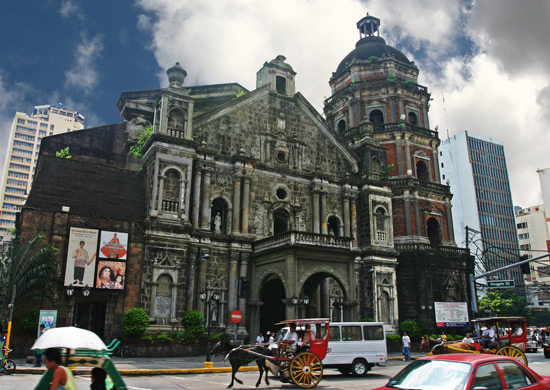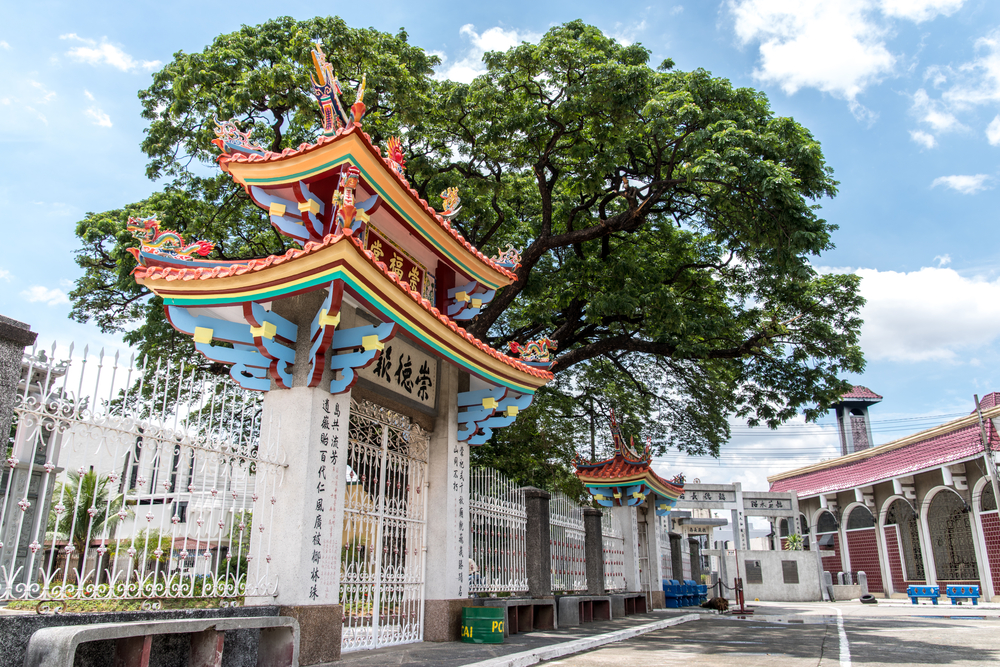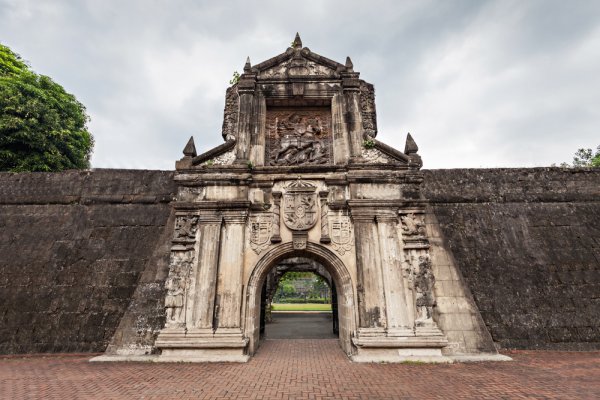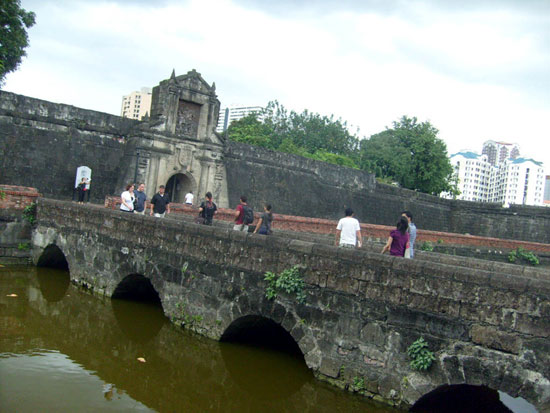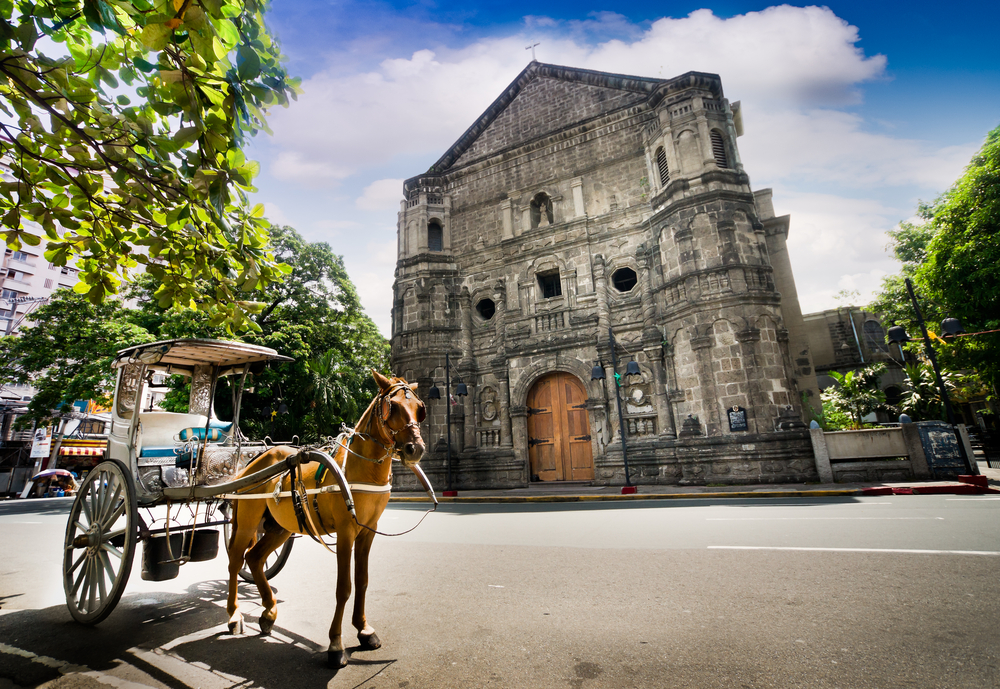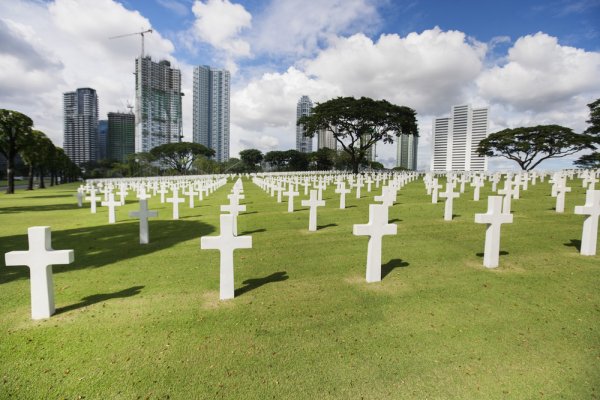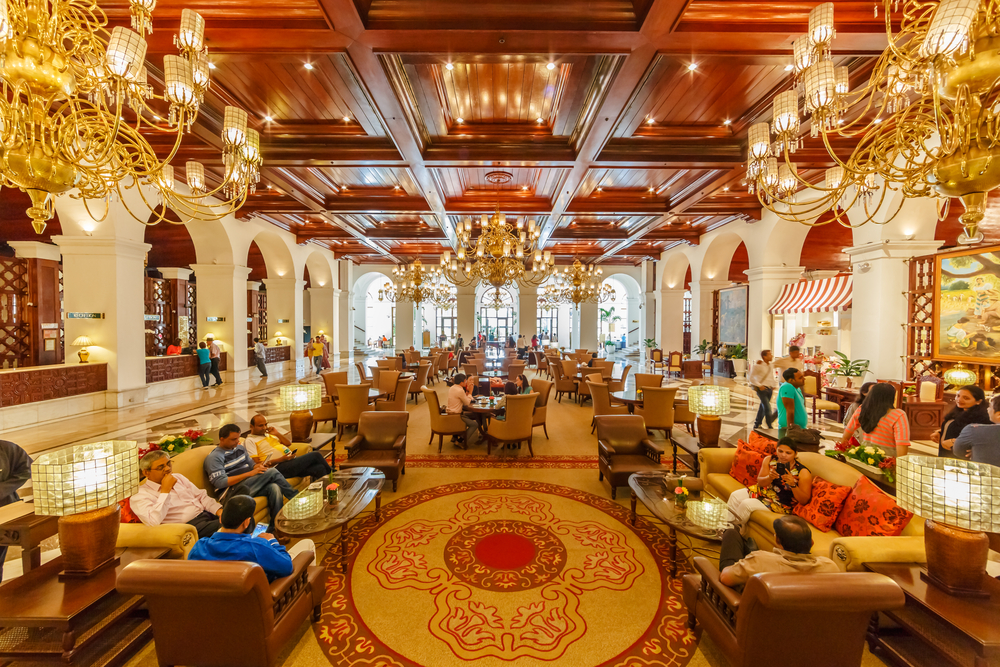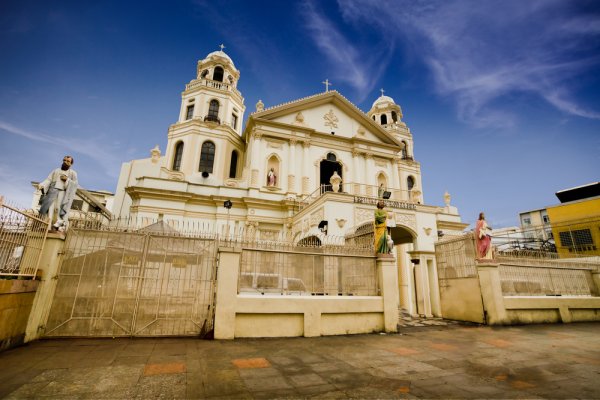Points of Interest
Binondo Church
Minor Basilica of St. Lorenzo Ruiz Quentin Paredes Street
Manila, Philippines
Binondo Church makes for an unusual example of early Catholic architecture, with its octagonal bell tower and mishmash of sections restored in later periods. Built in 1596, it is one of the oldest churches in the Philippines, and has weathered all kinds of damage, both natural and otherwise. These days, its upkeep is largely funded by wealthy Chinese businesspeople who live nearby. A vivid, blood-spattered statue of Jesus is the highlight inside and banners exhorting visitors to "Support the Seminarians!" hang everywhere The atmospheric streets around the church boast some intriguing wooden houses that survived the destruction of World War II, retaining their mother of pearl windows and tiled signs.
Chinese Cemetery
Santa Cruz, Manila, Philippines
The second oldest cemetery in Manila, this unique and very large attraction grew out of a small space where Chinese Filipinos could be buried, considering they were denied entry to Catholic cemeteries by the Spanish colonial authorities. The wealthier mausoleums feature all the modern conveniences, including air-conditioning, gold plating and high-end furniture-a bizarre sight that every visitor to Manila should see. Chong Hock Tong Temple here typifies Fujian pagoda style with colorful friezes and upward-pointing eaves. The striking six-storey Ruby Tower Hall commemorates all those Filipino Chinese who died in the 1968 earthquake. The roomy Martyrs' Hall is a tribute to the men and women executed by the Japanese Imperial Army during World War II.
Fort Santiago
Moog ng Santiago Intramuros
Metro Manila, Philippines
Fort Santiago, a defensive structure, is situated in the fortified city of Intramuros at the mouth of the Pasig River. The palace of Rajah Suliman, the chief of Manila, once stood on this site. In 1571, the Spanish destroyed the palace and began construction of the fort, which was completed 150 years later. The fort is protected by walls that are 22 meters (72 feet) high and 26 meters (85 feet) thick, with a 40-meter-high (131 feet) entrance. At present, the fort is a museum that houses, among other things, the Rizal Shrine, which is a replica of the prison cell where José Rizal (Filipino nationalist) was locked up before execution, and the prison dungeons.
Fort Santiago
Fuerza de Santiago Metro Manila, Philippines
Fort Santiago, a defensive structure, is situated in the fortified city of Intramuros at the mouth of the Pasig River. The palace of Rajah Suliman, the chief of Manila, once stood on this site. In 1571, the Spanish destroyed the palace and began construction of the fort, which was completed 150 years later. The fort is protected by walls that are 22 meters (72 feet) high and 26 m (85 ft) thick, with a 40-meter-high (131-foot-high) entrance. At present, the fort is a museum that houses, among other things, the Rizal Shrine, which is a replica of the prison cell where Filipino nationalist Jose Rizal was locked up before execution, and the prison dungeons.
Malate Catholic Church
2000 M.H. Del Pilar Street
Malate, Manila 1004, Philippines
Malate Catholic Church is an unique Muslim-baroque style church and one of the oldest churches situated outside of Intramuros. The church was probably built in the 16th century, and the original images housed in the church were shipped from Spain in 1624. The church's two main features are the consecration of the basilica to Nuestra Señora de Remedios (Our Lady of Remedies) and the statue of the Virgin Mary dominating the altar.
Manila American Cemetery and Memorial
Fort Bonifacio
Taguig City, Manila, Philippines
The Manila American Cemetery and Memorial is situated in an area covering 62 hectares (152 acres). The cemetery is the Pacific's largest memorial and holds 17,201 graves that include US, Philippine, and Allied soldiers killed during World War II. The marble headstones are arranged in eleven plots to form a circular design and are set beautifully amidst tropical trees and shrubs. The tall stone chapel is adorned with mosaic and lies near the center. Two big hemicycles with rooms occupy the front of the chapel and house 25 huge mosaic maps depicting the achievements of the US Armed Forces and the inscriptions of missing US personnel carved on Trani (fine-grained, beige) limestone platforms.
Manila Hotel
1 Rizal Park
Manila, Philippines
Arguably, the Manila Hotel is as much a place of historical interest as it is a place of accommodation. As soon as you enter the lobby you'll hear the string quartet playing and see the large vintage armchairs and glass-topped tables. You'll feel like you've been transported back to 1912, when the hotel was first opened. General Douglas MacArthur lived on the top floor while he masterminded the defeat of the Japanese in World War II—the archives pertaining to this are available for public view. Other famous past guests include The Beatles, John F. Kennedy, Ernest Hemingway, and Marlon Brando. The restaurant can be a bit pricey, but it offers gourmet-level fare with French, Filipino, Chinese, and Japanese options. If you're feeling flush, pop into the deluxe Champagne Room.
Quiapo Church
Quezon Boulevard, Plaza Miranda
Quiapo, Manila, Philippines
The Quiapo Church (also referred to as the Church of the Black Nazarene) was originally established in 1586 and is one of Manila’s most popular churches. The church was painted its current cream color after a fire in 1928. The church is well known for the Black Nazarene, a life-sized statue that dominates the church. The church is crowded every Friday as devotees flock to offer prayers by lighting candles in front of the statue. The main feast of the church, the Feast of the Black Nazarene, is celebrated on January 9. On Good Friday, believers carry the statue through the city streets in a huge procession.
San Agustin Church
General Luna Street, Intramuros
Manila 1002, Philippines
San Agustin Church, built between 1587 and 1606, is one of the Philippines' oldest churches and one of only four Baroque churches in the country. Located in Intramuros (the walled city), the present church is the first European stone church built using a Spanish architectural style. Visitors who go through the beautifully carved entrance door can admire the 19th-century chandeliers, a magnificent pulpit, 14 side chapels, an 1800s pipe organ, and a trompe-l'oeil ceiling. The choir loft has hand-carved 17th-century seats made of molave wood. The church also houses underground tombs of the Spanish conquerors. A small museum lies next to the church and exhibits church artifacts.
Copyright © 1993—2025 World Trade Press. All rights reserved.

 Philippines
Philippines 